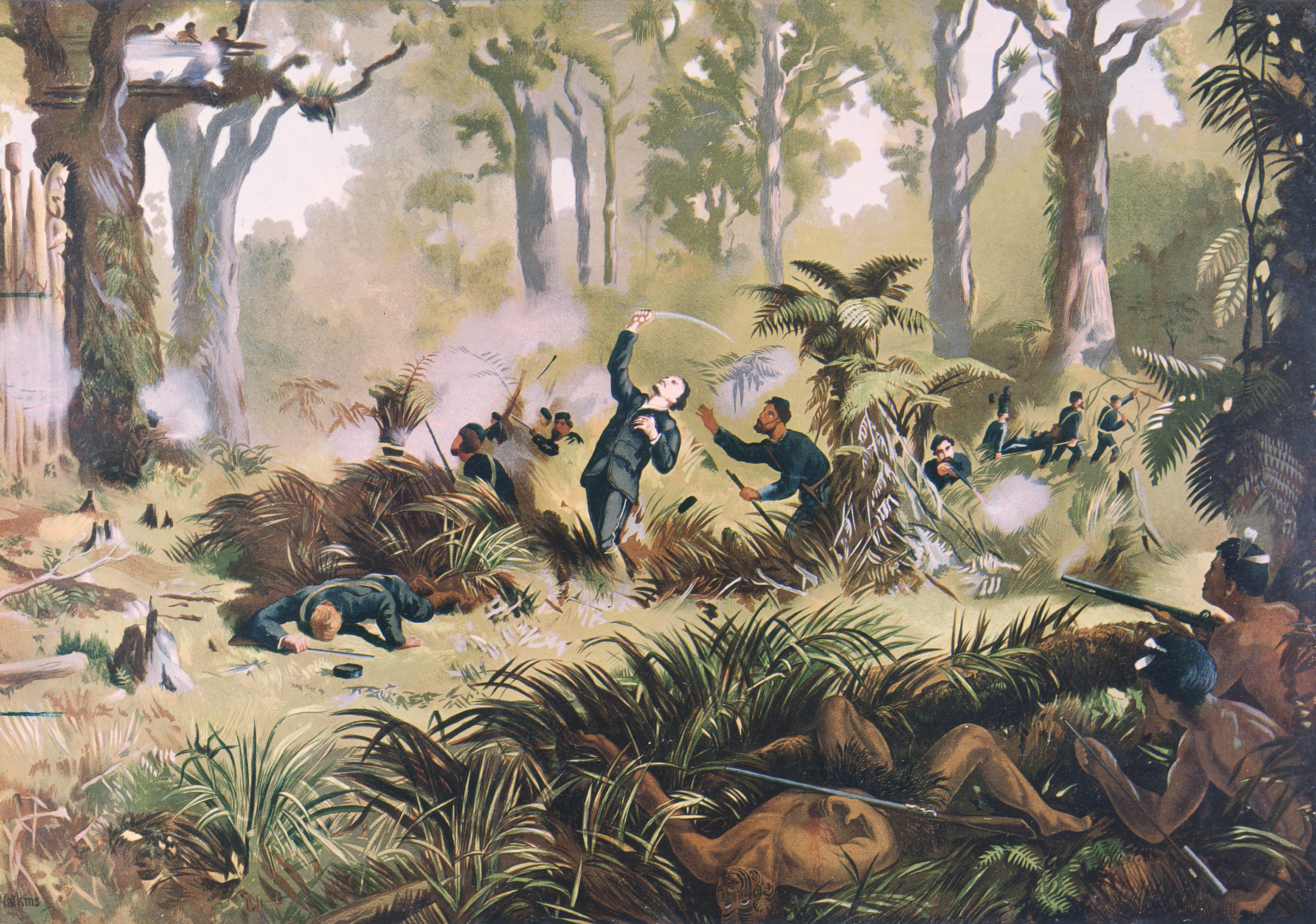Since 1845, the British had been fighting the Maori in New Zealand in an effort to crush any resistance of British control in the colony. The Maori, who lived on the North Island of New Zealand, did not want any British rule over their land, and they fought wars over the rights to sell and have jurisdiction over land. By 1863, the wars had involved a greater and greater number of British troops in order to suppress the Maori King Movement, which called for the formation of a unified Maori nation under one king
.

The British governor of New Zealand, George Grey, decided to crush the Maori King Movement, which was centered in the Waikato Region. The British forces, under the command of Lieutenant-General Duncan Cameron, numbered around 15,000, which was a massive number compared to that of the Maori. Cameron’s force of colonials crossed the Waikato River on July 12, 1863, and the Maori met the British troops in various engagements.
Wiremu Tamihana, the leader of the Maori force, clashed with British troops at the Battle of Meremere on October 12, and the British attacks were not decisive enough to Crush the Maori. Tamihana lead his troops from the pa, a defensive settlement, and slipped away in the night.
One month later, Cameron’s forces met the Maori at Rangiriri, a well-structured but incomplete pa. The British assault was turned by the defenders of the main redoubt, but the sheer numbers of British troops eventually stormed the pa. The British artillery proved to be strangely ineffective against Maori fortifications throughout the New Zealand Wars, and Rangiriri was no exception. The Maori troops once again escaped in the night from British forces, yet Lt.-Gen. Cameron claimed victory.
The Maori still held the Paterangi Line, an extensive line of fortifications that they retreated back to after the Battle of Rangiriri. A large mobilization of Maori, some 2,000 strong, occupied the Paterangi Line, and prepared to meet the British in early 1864. Gustavus von Tempsky, a Prussian officer of the Forest Rangers, led his troops in an attack on the Maori at Rangiaowhia. Von Tempsky was killed in the engagement after being shot through the head, and the Paterangi Line remained in Maori control.

Rewi Maniapoto, the leader of the King Movement, gathered his forces at Orakau in March, and the British forces arrived to put an end to Maori resistance. The defenders of the pa were offered a chance to surrender but replied “Friend, we will fight forever, forever, and forever.” The British assaulted the pa relentlessly and eventually defeated Maniapoto on April 2 after a combined British force of 1400 crushed the defenders. The Battle of Orakau is known as “Rewi’s Last Stand.” However, the Maori yet again slipped away into the night and managed to keep the embers of the King Movement alive, and the New Zealand Wars continued into the 1870’s.
